Kodak 35mm helped Paul Thomas Anderson spin a potent yarn in 'Phantom Thread'

Vicky Krieps (left) stars as “Alma” and Daniel Day-Lewis (right) stars as “Reynolds Woodcock” in writer/director Paul Thomas Anderson’s "PHANTOM THREAD", a Focus Features release. Credit : Laurie Sparham / Focus Features
Shot on Kodak 35mm film, director Paul Thomas Anderson’s highly-acclaimed and exquisitely-crafted Phantom Thread weaves a yarn of potent romantic suspense about a renowned dressmaker whose perfectionist life is disrupted by a strong-willed young woman who becomes his muse and lover.
Set in the glamour of 1950’s London, couturier Reynolds Woodcock (Daniel Day Lewis) and his sister Cyril (Lesley Manville) are at the heart of British fashion, dressing royalty, movie stars, socialites, debutants and dames with the distinctive style of ‘The House Of Woodcock’ – often with secret messages stitched into the linings of their garments. Women come and go through the confirmed bachelor’s life, until he encounters Alma (Vicky Kreips) and finds his carefully-tailored life disrupted by love.
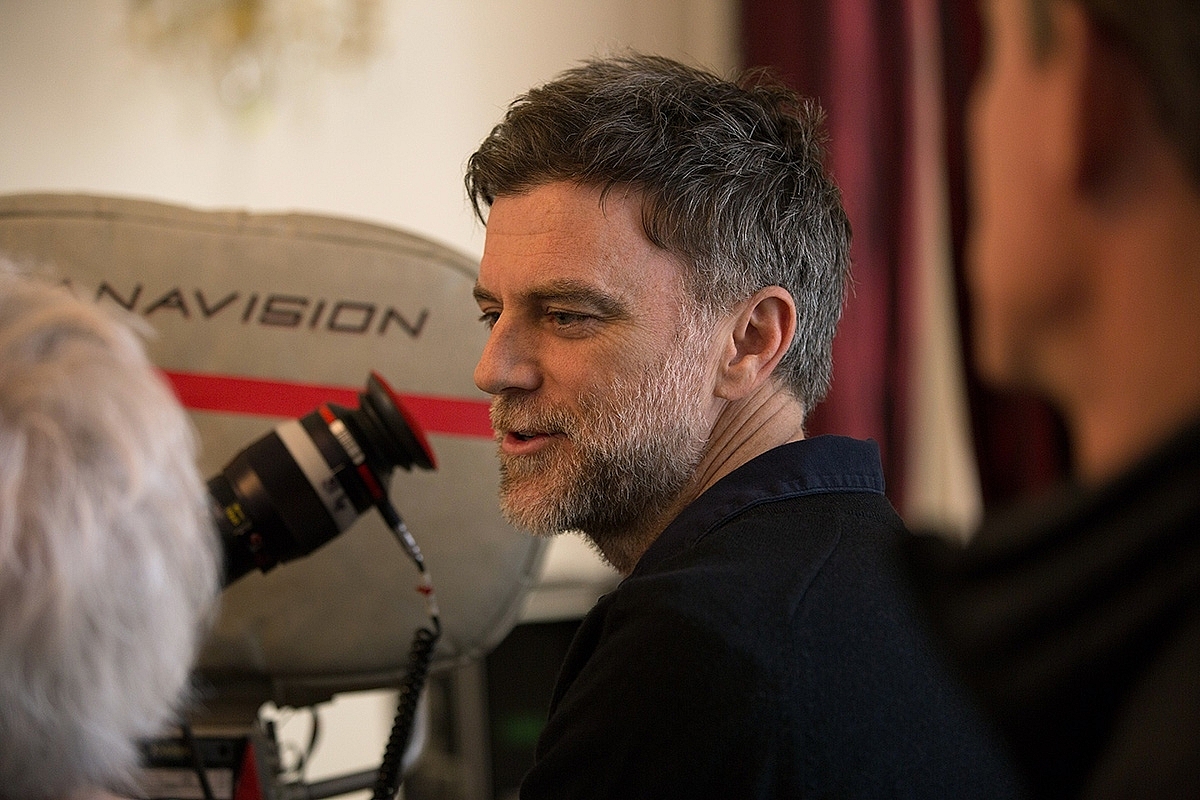
Writer/director Paul Thomas Anderson on the set of his upcoming release "PHANTOM THREAD", a Focus Features release. Credit : Laurie Sparham / Focus Features
With a beguiling score, written by Jonny Greenwood, to accompany the intriguing narrative, Phantom Thread, picked up six Oscar and four BAFTA nominations during the 2018 Awards season with wins at both ceremonies for its costume designer Mark Bridges.
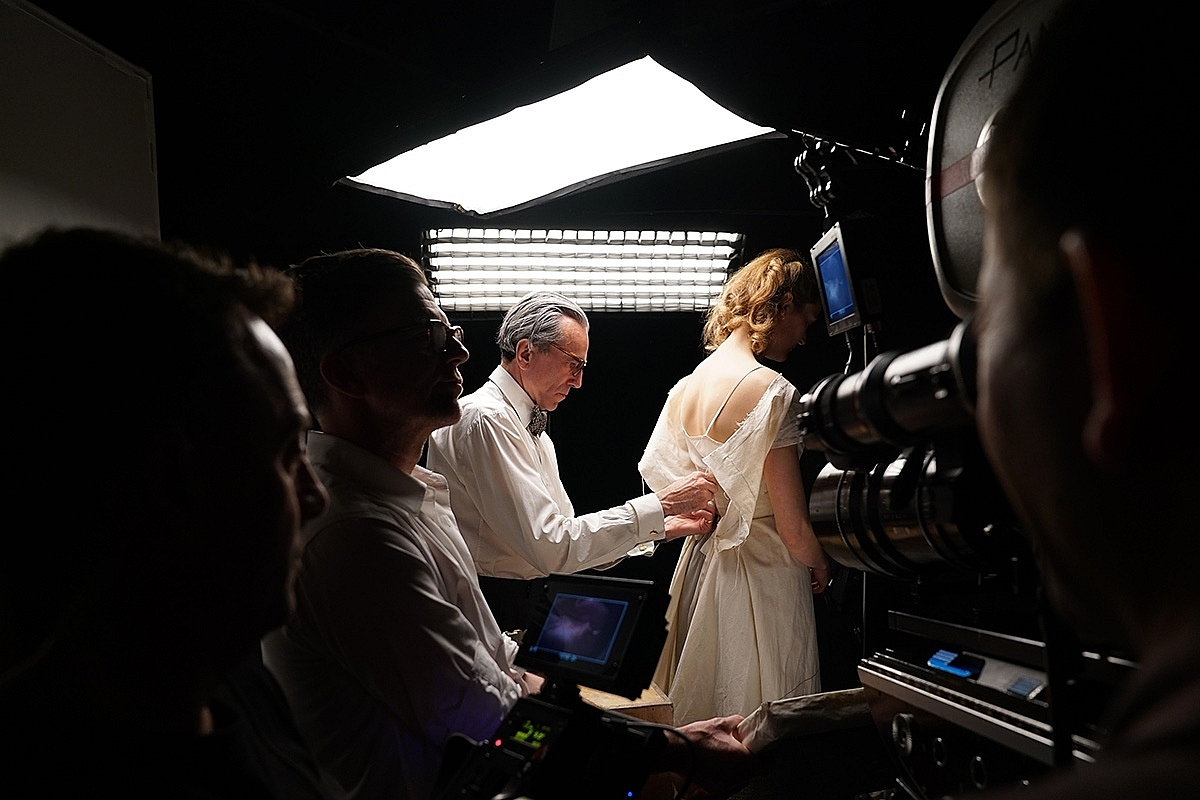
A behind-the-scenes shot on Paul Thomas Anderson's "PHANTOM THREAD". Image © Mike Bauman
Production on the movie took place over 67 shooting days, starting at the end of January 2017, encompassing locations in North Yorkshire, The Cotswolds, Switzerland and London. This included a shooting in a Grade-I listed Georgian townhouse in Fitzroy Square, where much of the filming was accomplished under tight restrictions.
Cinematographic duties on the film were a collaborative affair between Anderson, lighting cameraman Mike Bauman, camera operator Colin Anderson and gaffer Jonny Franklin. As the film was loosely modeled on British fashion maestro Charles James, one of the most influential designers of the 20th century, the team considered a wealth of haute couture references, including other designers of the period, such as Cristóbal Balenciaga, along with photographic stills of post-war London.
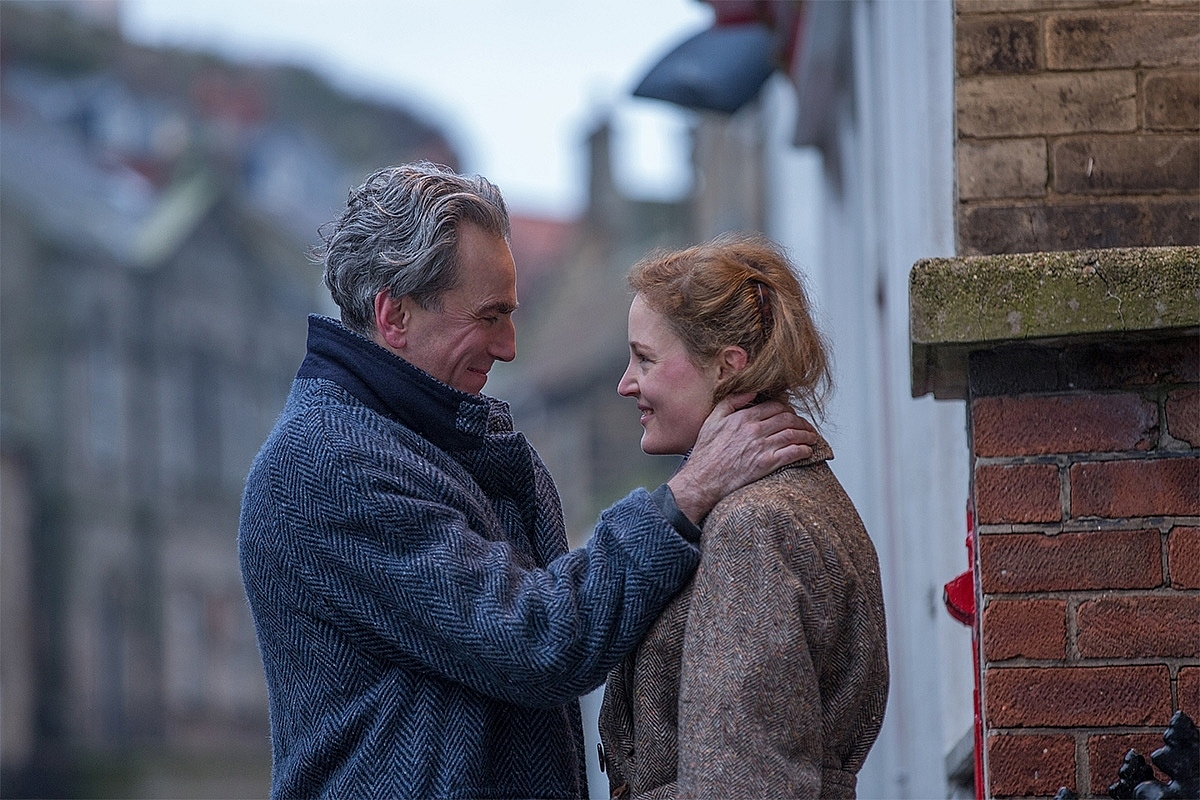
Daniel Day-Lewis (left) stars as “Reynolds Woodcock” and Vicky Krieps (right) stars as “Alma” in writer/director Paul Thomas Anderson’s "PHANTOM THREAD", a Focus Features release. Credit : Laurie Sparham / Focus Features
Feature-film references discussed for the look also included the cinematographic work of George Barnes on Alfred Hitchcock’s Rebecca (1940) for its style of capturing costume and character, and John Alcott BSC’s work on Stanley Kubrick’s Barry Lyndon (1975) for its naturalistic-looking photography.
Shooting digital was never an option for Anderson, who prefers to shoot only with film, including the epic drama There Will Be Blood (2007) and the critically-acclaimed The Master (2012). During prep, the team undertook extensive tests to arrive at the director’s desired visual evocation of the London fashion scene of the 1950s.
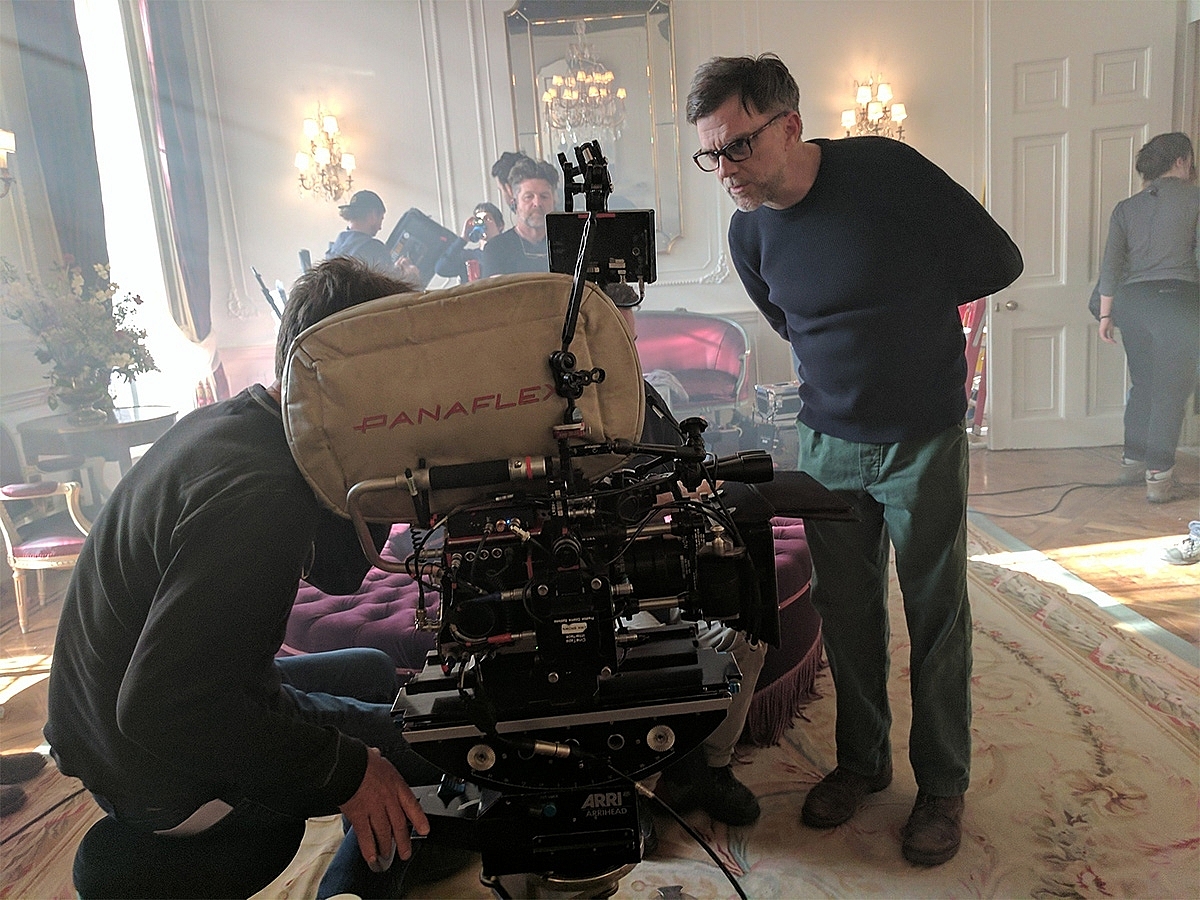
A behind-the-scenes shot of director Paul Thomas Anderson during the production of "PHANTOM THREAD". Image © Mike Bauman
“The larger point from Paul was about getting as much texture into the image as possible,” says Bauman. “Consequently, we did comprehensive testing – with all of Kodak’s current range of VISION3 filmstocks, different types of lighting, pushing the film, low-contrast filtration, atmospheric smoke, nets and around 100 different period lenses – experimenting with a wide range of ways that would break down the image and allow a sense of the past to get into the film.”
A compilation of these tests, set to Greenwood’s score, have been released on YouTube and include a bonus scene that was not included in the final cut.
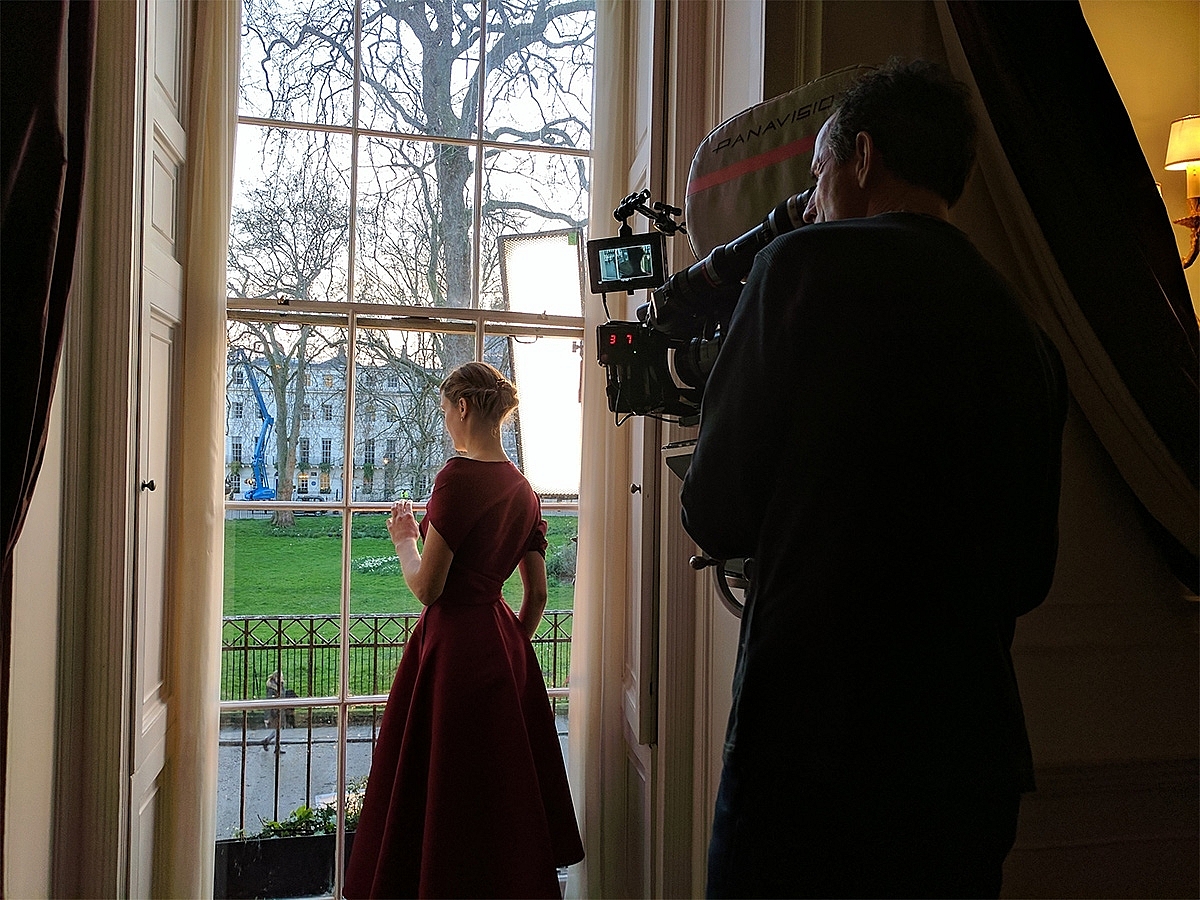
A behind-the-scenes shot showing the lighting rig at Fitzroy Square on Paul Thomas Anderson's "PHANTOM THREAD". Image © Mike Bauman
The team ultimately selected a Panavision Millennium camera with a bespoke assortment of lenses that Anderson compiled with Dan Sasaki at Panavision that incorporated some of the director’s favorite glass, such as the 50mm Pathé and vintage Super Speed lenses, among several others.
The primary stock deployed for the production was KODAK VISION3 500T (5219), rated between 640 and 800ASA depending on the scene, with the decision taken to push all of the footage by a stop. Film processing was done by i-Dailies (now Kodak Film Lab London, and based on the lot at Pinewood Studios) and Cinelab.
“Paul and I know the 500T well and have shot with it a lot,” says Bauman. “It’s a stock that people keep coming back to because, with a push, it picks up some extra texture and the ASA competes with digital. We settled on a push for the entire movie, which had the effect of enhancing the film grain, increasing the contrast and delivering more saturated color.”

Vicky Krieps (left) stars as “Alma” and Lesley Manville (center) stars as “Cyril Woodcock” in writer/director Paul Thomas Anderson’s "PHANTOM THREAD", a Focus Features release. Credit : Laurie Sparham / Focus Features
The entire movie filmed at practical locations, shooting 5-day weeks, doing 12-hour days. The crew faced many challenges along the way, one of the trickiest being the Georgian property on Fitzroy Square, known in the film as ‘The House of Woodcock,’ where the majority of Phantom Thread was shot.
Production in Fitzroy Square was restricted to an 8 a.m. to 8 p.m. schedule and, as the Grade-I listed property was going through renovation, the first challenge that met the lighting team was the lack of power and cabling throughout the building. This meant gaffer Jonny Franklin and the electrical team having to re-wire the whole five-story house, although the benefits of doing so quickly became clear as they were able to wire every electrical socket and bulb back to a central lighting desk.
“We needed to get a vast amount of light into the building, and usually I would have used cherry pickers with large lamps on,” says Franklin. “But, the problem was we were not allowed to occupy any of the space outside the footprint of the building and had to remain within the property’s railings – which was only distance of 4 ft 6 in. away from the building.
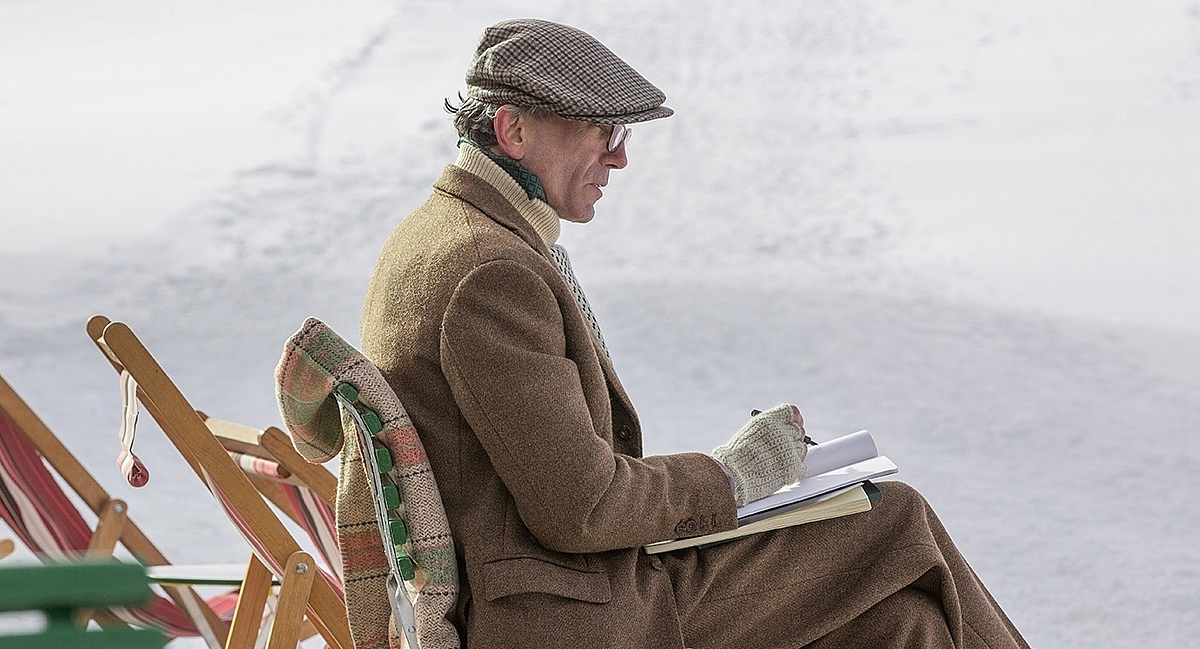
Daniel Day-Lewis stars as “Reynolds Woodcock” in writer/director Paul Thomas Anderson’s "PHANTOM THREAD", a Focus Features release. Credit : Laurie Sparham / Focus Features
“Additionally, the location was specifically chosen by Paul because he wanted to be able to see out of the windows. So we had to carefully plan a rig that would not only fit within the railings but also couldn’t be visible from within the house looking out.”
Building such a narrow rig, at such a height, and without being able to bolt into the walls, took a lot of careful planning. To light it, Franklin had two ladder beams per window, with five vertical ARRI Sky Panels on each. They were on runners and could be rolled in and out of shot. For any hard sun, he rigged together a few 2.5KW HMIs.
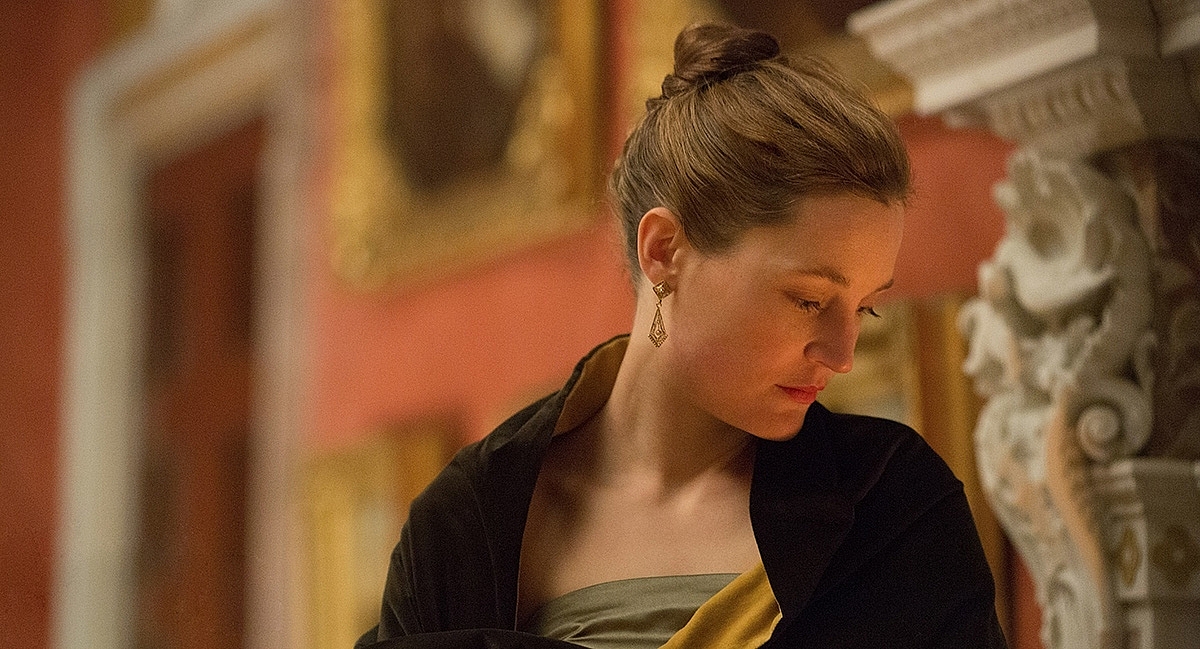
Vicky Krieps stars as “Alma” in writer/director Paul Thomas Anderson’s "PHANTOM THREAD", a Focus Features release. Credit : Laurie Sparham / Focus Features
“Usually it’s more ideal to have your lamps further away from your subject but on this occasion, we had no choice and had to adapt to Paul’s specific requirements. Fortunately, the system I employed turned out to be really successful.”
Bauman concurs: “When we saw the first dailies, we were wowed out. With the costume and production design, our various lenses, push-processing, atmos and controlled lighting, the picture was instantly into that time period. We were also very happy with how the 500T captured the skin tones on the actors and the way it handled details in highlights, which would just have burned out if we’d been shooting digitally. Phantom Thread is an homage to classic cinematic and sartorial aesthetic values, and it’s thanks to the powerful values of film that the final film has its lovely, soft, textural quality.”